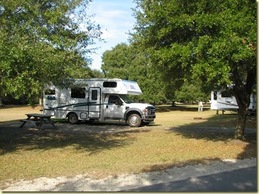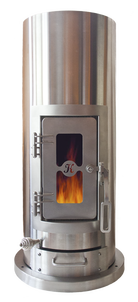Insulation
The first thing I will do to control my climate is to insulate very well, and install double glazed windows, so that I don't lose heat or coolness very quickly. The better insulated my home is, the less energy it will take to keep the temperature where I want it. After a lot of exploration of natural insulation, some of it still experimental, I ended up going for a conventional solution that insulated twice as well: closed cell rigid foam insulation, covered with aluminum foil and sealed with aluminum foil tape. With twice the R value of natural insulators, it allows me to super-insulate my home without losing too much interior space, and the foil is a good barrier for any potential outgassing, although rigid foam board is on the low toxicity end of insulation.
Conscious Parking

Stationary houses can be built with passive heating and cooling in mind, to capture heat and allow ventilation. With a mobile house, I can change my orientation by parking differently. I can seek out breezes and shade in hot weather, maximum light, wind shelter, or sun in the cold.
Seasonal Migration
 Summer grazing in the Stara Planina, Bulgaria.
Summer grazing in the Stara Planina, Bulgaria.
One of the oldest methods of climate control, shared by many species, is seasonal migration. There are many human communities where I have ties, some in warmer places, some in cooler ones. One way to reduce energy spent on cooling and heating is to stay in warmer climates during the winter, and cooler ones in summer.
Climate Tolerance
Heat
 Kimberly Stove
Kimberly Stove
Ah, mini-splits. It took me the longest time to understand what on earth you were, but now I grok you, and I am filled with admiration. Mini-splits use electricity and coolant to move air back and forth in ways that will either heat or cool your house depending on what mode you have it in. How great is that? But I don't think I'll need one!
My main heat source will be the Kimberly Stove, a super efficient, low pollution wood stove. The Kimberly has accessories that allow for cooking, baking and generating electricity from heat--and technology now in development will allow the generator to double as a water heater. But for now, I'll use a small propane water heater or do sponge baths in front of the fire.
My main heat source will be the Kimberly Stove, a super efficient, low pollution wood stove. The Kimberly has accessories that allow for cooking, baking and generating electricity from heat--and technology now in development will allow the generator to double as a water heater. But for now, I'll use a small propane water heater or do sponge baths in front of the fire.
Cooling
Last summer was the hottest on record, ever. I can drive south to escape the cold, but heat will become less and less escapable. Although I grew up in the tropics, we lived in the mountains, and I don't do well in extreme heat. I'm looking into the possibilities of DC powered air conditioning, will have fans, and will rely on thin clothing and thick insulation to help keep me cool.

